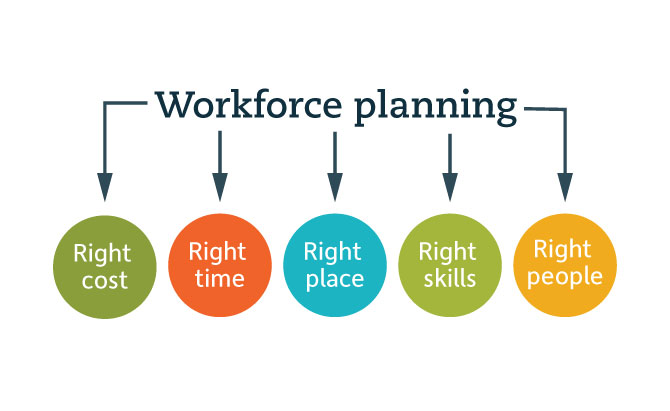Do you want to know what workforce planning is?
In this business blog, we discuss in detail everything about workforce planning to help you better understand.
What is Workforce Planning?

Let us explain to you in simple words. Workforce planning is all about predicting current and future staffing needs.
At first, you have to formulate your strategic business objectives. After that, you address the labor supply. For example, are they candidates available with the skills you need to achieve your business objectives? In the last step, they have to balance labor demand and supply; it means they should have a suitable number of employees with the needed skills at the right time.
Labor Demand Forecasting
In a business, the role of labor demand forecasting is vital. A business would not want an excess of employees who are not skilled or deployed effectively. Moreover, they would not want gaps in their employees as it could result in decreased productivity, performance, and profitability.
Business owners who are contemplating labor demand forecasting would get the following questions on their minds:
- Where is the business going- what our intended growth is for the next 3-5 years or longer?
- Will we enhance or expand our products or services area?
- What technological progressions might affect what they do, and will this affect the need for differing staffing levels?
- What are our truancy and turnover rates like?
- Do we have enough management support to advance our objectives, and will they follow the plans?
The fact is, any change within the human resources in a business should get led by a strategic plan and goals for the business and not the other way around.
Labour Demand Forecasting Approaches
There are two approaches when labor demand forecasting gets undertaken- quantitative and qualitative.
Let us explain both.
1. Quantitative
Different statistical and mathematical techniques get used in the quantitative approach to determine the requirements, including indexation (predictions determining one or more organizational records, and trend analysis (predictions based on the past human resource growth study). Such methods can be complicated and expensive. However, it gets really needed, especially by large organizations.
2. Qualitative
A business that is small or medium-sized normally relies on qualitative approaches for labor demand forecasting. Experts get used to these approaches to choose future needs, like employees, managers, and business owners.
The more popular qualitative approaches are:
- Delphi Technique: It uses problem-solving and expert consultation techniques in structured practice. It has managerial judgment, where business owners and managers will assess their own labor needs, taking various account factors like retirements, promotions, modern technologies, etc.
- Nominal Group Technique: It uses group processes to compare forecasting on future staffing needs.
The main advantage of using qualitative methods, especially with SMEs, is how it uses methods that require people affected by business changes in human resources practices. Therefore, it is expected to be a significant commitment and accept those involved with the policies and procedures. However, it also has disadvantages like time, and the cost of implementing employees, managers, and business owners.
Businesses that incorporate HR software to support HR Consultants in leading their processes and adopting the most suitable methods to assist the business through these processes in order to predict future employee needs.
3. Labor Supply Analysis
After a business predicts what it requires in the future, the next step will be to consider the number of employees, skills, and when they will get needed. Labor supply can be from within or outside of the organization. Therefore, the first step is to analyze the skills a business already has within it.
However, if the business does not have the skills available internally, they have to get looked for externally. Viewing the external factors like skills available within the job market gets recognized significantly.
4. Balancing the Supply and Demand
A business needs enough employees to achieve its business objectives. However, if it has fewer employees, then recruitment strategies will have to get devised. Reflection gets linked to job design, career development, flexible work options, and profit and reward programs.
A business that has too many employees will need to create more effective strategies to manage retirements, repetitions, and if suitable dismissals.
In conclusion
A business that wants to grow and limit various situations where they face too many or too few employees or employees with the wrong skills understands the importance of workforce planning. Moreover, business owners can use workforce planning to view how their employees can assist them in achieving their strategic business objectives.

